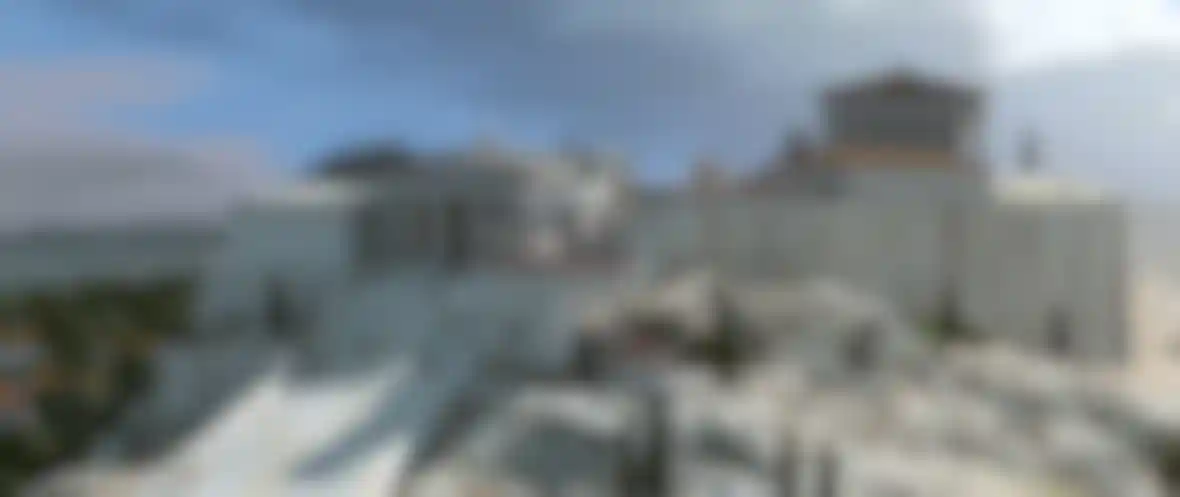
Recreating the Ancient World of Nike Cinema 4D comes out the winner in this long-term project to reconstruct the Temple of the Goddess of Victory.
In Greek mythology, Nike is the winged goddess who bestows victory on the worthy and proclaims the skill of the triumphant to Gods and men alike. Her spheres of influence are those of war, sport, poetry, and art - wherever there is struggle, competition and victory. On the battlefield, in the arena or on the stage, Nike was present, rewarding victors with glory and fame. As the embodiment of strength, speed, power and victory, Nike was hugely popular in Greek and Roman culture. She adorned many items such as vases, armor and coins, and appeared on friezes and sculptures atop temples, columns and podiums.
Although her cult died many years ago, Nike has had a profound and lasting influence on modern culture, her attributes giving rise to angels and fairies. The common winged figures found on sporting trophies and civic architecture, war memorials and hood ornaments all owe their inspiration to the Goddess of Victory. Perhaps most famously, Nike was the inspiration for the Rolls-Royce hood ornament.
To tell Nike's story, British artist John Goodinson and American archaeologist Peter Schultz have produced an international documentary program that sets the standard for aesthetic and archaeological accuracy. Goodinson is a graphic designer whose previous work in film post-production includes Legend, Aliens and Leaving Las Vegas. Schultz is an archaeologist and art historian whose previous work includes studies of the major architectural monuments throughout Greece. Goodinson took on the challenging job of reconstructing the Temple of Athena Nike, which is situated on the Acropolis of Athens. Built around 425 BC, it is companion to some of the most important buildings of ancient Greece, including the Parthenon, the Propylaia, and the Erechtheion.
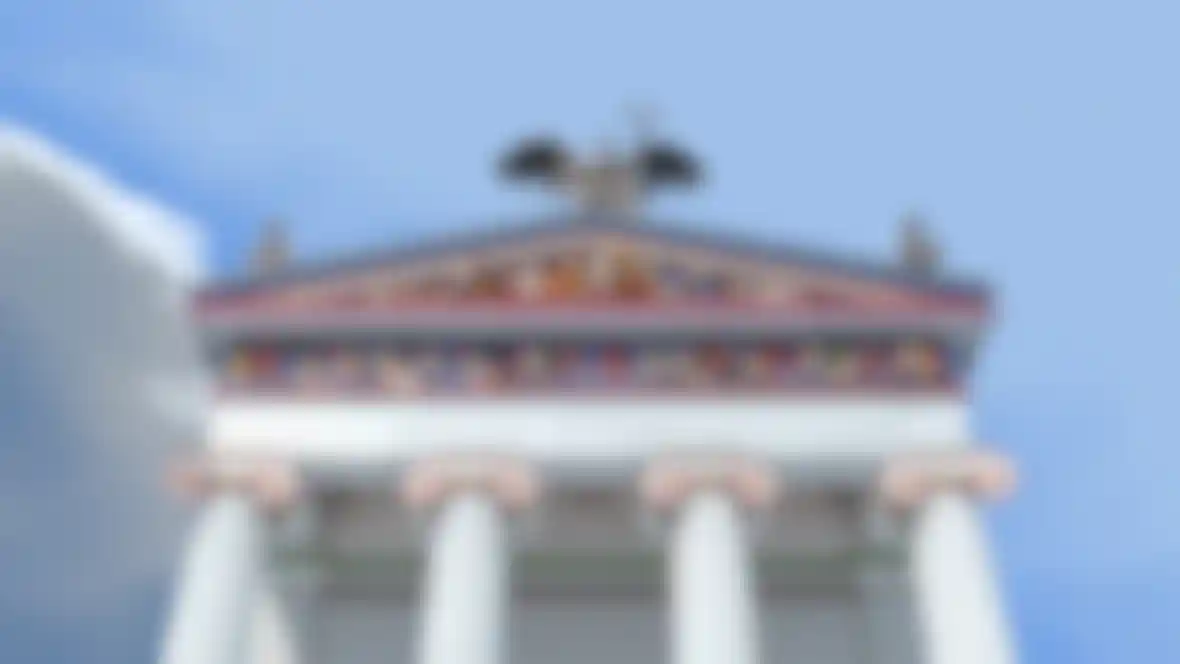

The cutting edge project, entitled 'Nike Is Now,' features a website (www.nikeisnow.co.uk), which tells the story of Nike, a trailer for the upcoming international documentary, and a showcase of the ongoing work in the recreation of the Temple of Athena Nike. A model of the Acropolis with its world famous monuments has also been reconstructed to show where the temple was situated.
"The team can analyze architectural propositions in 3D, refine the approach, 'adjust' the model and then consider the reconstruction for credibility," explains Goodinson. "In particular, the model presented a unique opportunity to test theories about the temple's lost beautiful parapet, which ran continually around three sides with sculptures of Nike in various poses. The current temple features conjectural reconstructions for the west temple pediment, parapet and Nike central acroterion (roof sculptures). The west frieze is modeled on the only surviving actual frieze sculptures at the British Museum."
Goodinson's main technical challenge was to create a model that was fluid enough to accept continual adjustments as the project progressed. In particular Cinema 4D's XRefs, without which the placement of individual architecture on the Acropolis model would be difficult to manage.
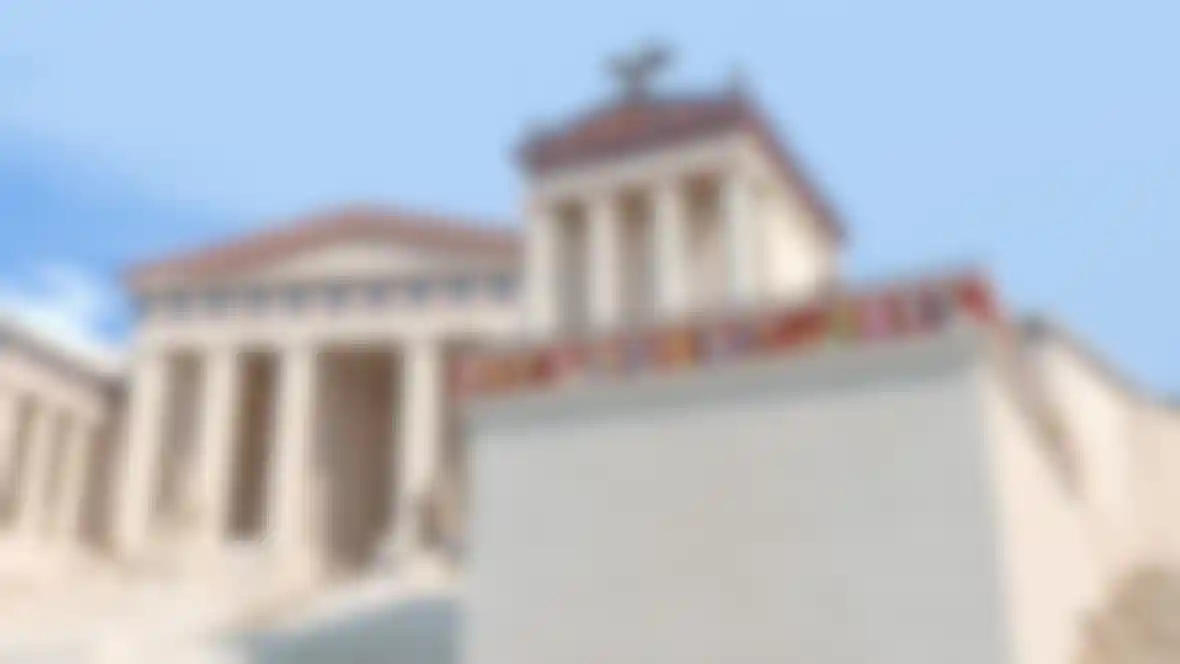
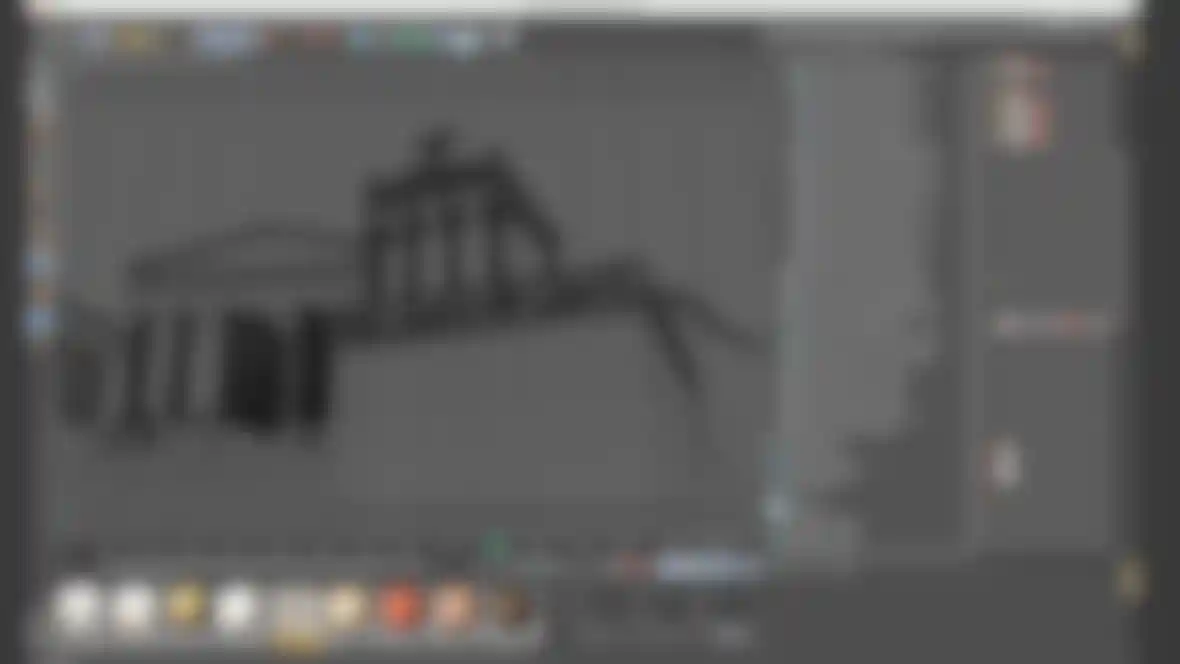
"Early on it was decided that a low-polygon model with enough detail would be acceptable for the flat surfaces," he says. "Items such as the ionic capitals would be much more detailed. In particular, the frieze sculptures had to be accurate enough to be convincing. Poses had to be correct to the existing archaeological source material. However, as we would always be viewing from a distance, optimum polygon modelling was essential."
Working with Cinema 4D Visualize, Goodinson crafted the figurines using just basic modeling tools. "Cinema 4D's Create Polygon tool together with the Extrude, Knife and Brush tools, for polygon smoothing, were used exclusively for all the sculpture work - which was the most time-consuming."
Building these intricate sculptures one polygon at a time was an arduous process: "For the parapet, the Nike head took about 20 hours," he comments. The Nike with Bull pose took about 40 hours. Then the front temple frieze took a month - about 160 hours. However, tweaking and revising the frieze model was an ongoing process so it's difficult to give a complete production schedule for each model (I wasn't timing myself). Also, a lot of the time was spent analyzing this existing frieze from my own photography to get the poses right."


You may have thought that a sculpting application would be more appropriate for this task but Goodinson disagrees: "I have used other programs for sculpting," he says, "however, the retopo tools do not produce an optimum mesh - which is why I use the polygon tool for the best geometry. You need a slow and steady approach to classical Greek sculpture. In short, the Polygon tool is king."
Work began with a reference image of the existing Nike poses in the front viewport. Goodinson would then create a single polygon and trace the outlines of the sculpture, aligning the mesh to the contours of the original. Switching to perspective view, he then used additional reference material and adjust the mesh for depth. "I was tutored in life drawing by a fine artist for three years at art school," he says. "This discipline in 'spatial awareness' was paramount to understanding three dimensional forms, especially human."
Not only did Goodinson populate the enormous frieze running around the top of the Temple of Athena Nike and reconstruct the ornate parapet around the base, he also crafted the huge statues that adorn the site. In addition to the intricate acroteria - or roof sculptures - that sit atop the Temple of Athena Nike, he also built the huge golden statues of Athena and Zeus.
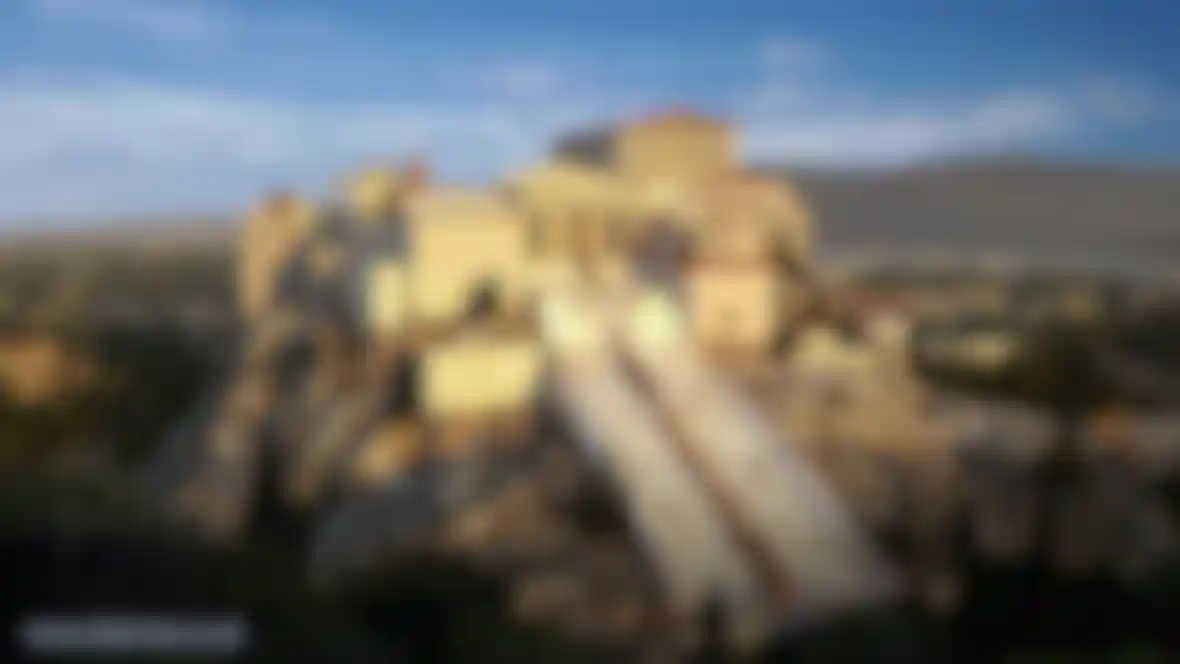
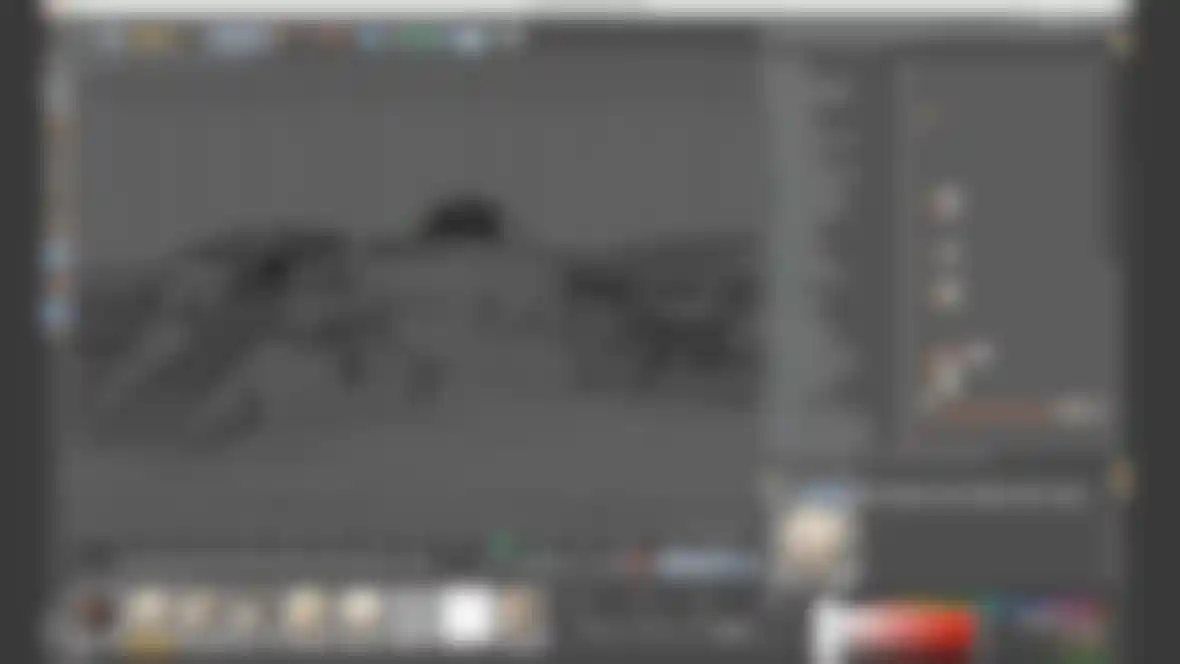
"Zeus was built entirely by hand as I've described," he explains. "Athena was partially based on the only reference mesh I had - an online, very low-res scan based on the British Museum Caryatid, which I completely remodeled. Athena's head, arms and upper body and pose are my original mesh work."
For the color and texturing, Goodinson used extensive polygon selection tags, enabling him to easily change colors to suit. This was absolutely necessary, he says, "as colors have to be changed quickly and effectively. Greek sculpture was painted in a polychrome technique using a palette of flat colors, especially red and blue."
The model of the entire Acropolis site was based on Goodinson's own photography taken in Athens, plus side elevation drawings and existing models referenced from the past 100 years. "The best topology reference was the plaster model of the entire Acropolis at the Ashmolean museum at Oxford," he adds. "No data sets were used but the model has gone through several revisions."
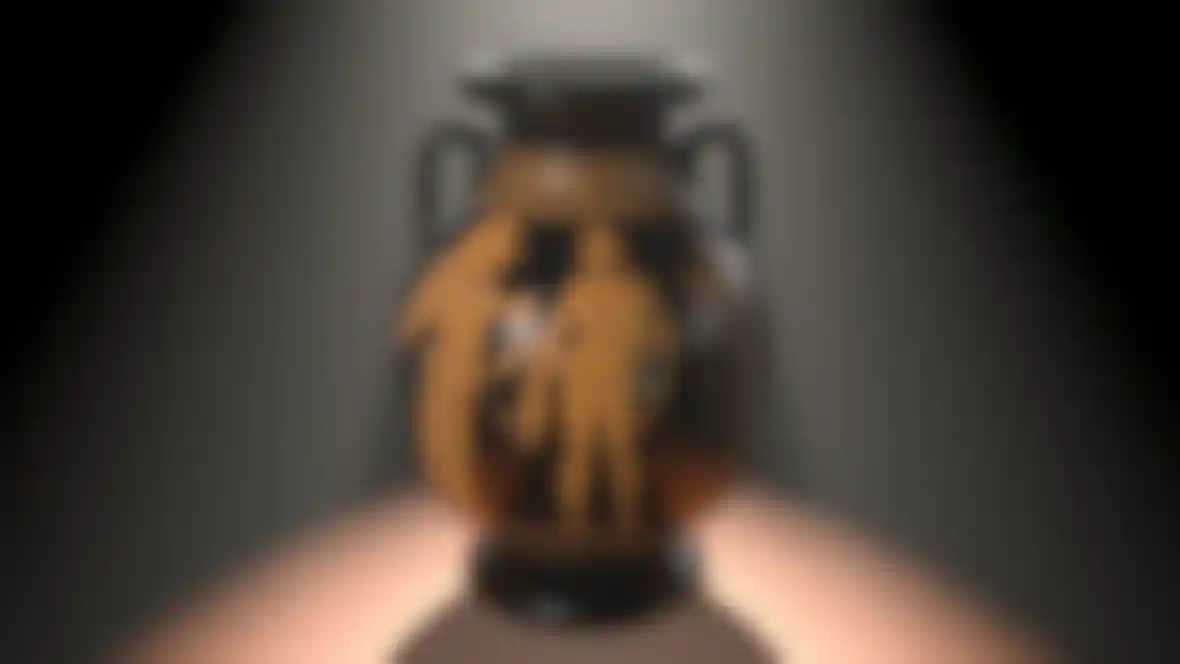
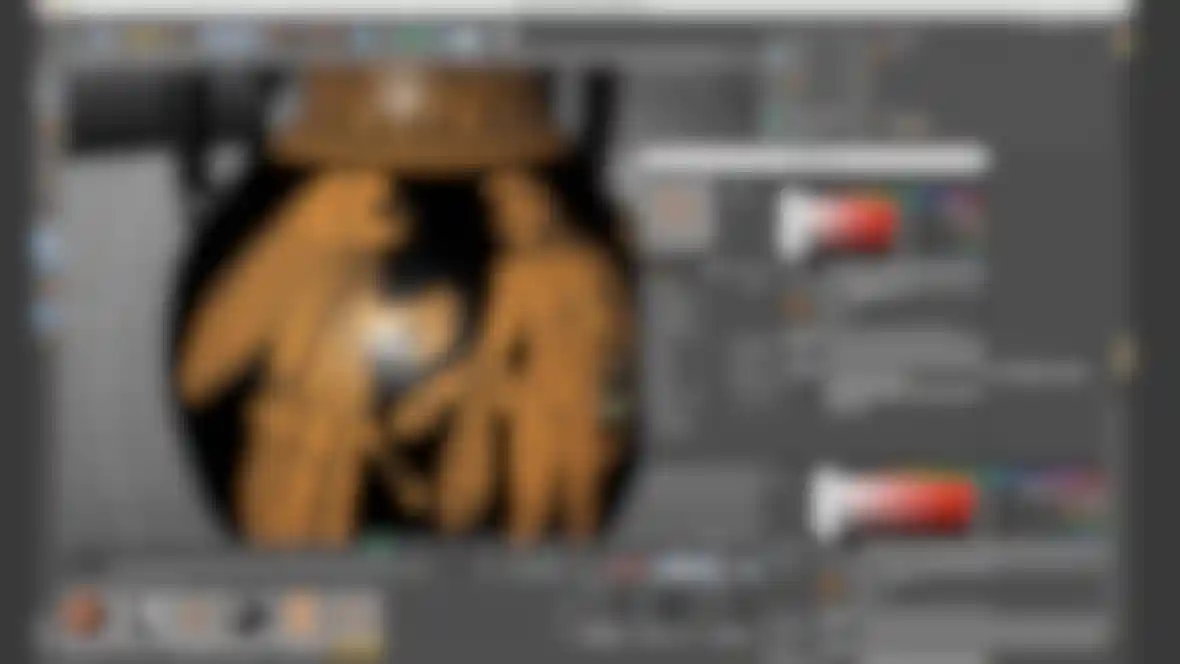
The surrounding scenery was populated with simple polygonal shapes for the buildings and trees, although the online tree generator Snappy Tree was used for added detail. It was finished with procedural marble textures, with bump mapping and sub-poly displacement used to add realism to the landscape and for ageing the stonework on the top base. For most of his renders Goodinson used Global Illumination with secondary light mapping, with ambient occlusion applied to certain textures and for particular, renders.
Having been working on 'Nike Is Now' on and off for four years, the CG recreation is at a point where it's effectively finished, but open to revisions. "It's in a state of 'incremental completion', to be adjusted to consider alternate viewpoints on the archaeology and architecture."
For Goodinson, the hardest part of this obvious labor of love is patience and preparation. "It's all in the prep!" he says, adding, "the closer you get, the more detail is needed, think like (Albrecht) Dürer. The further away you get, think like Turner!"
Goodinson first got into CG with Cinema 4D GO in 2000, and began working professionally with Cinema 4D R9. He now uses it every week, and says "the alchemy of software in the imagination of the artist produces something wonderful."
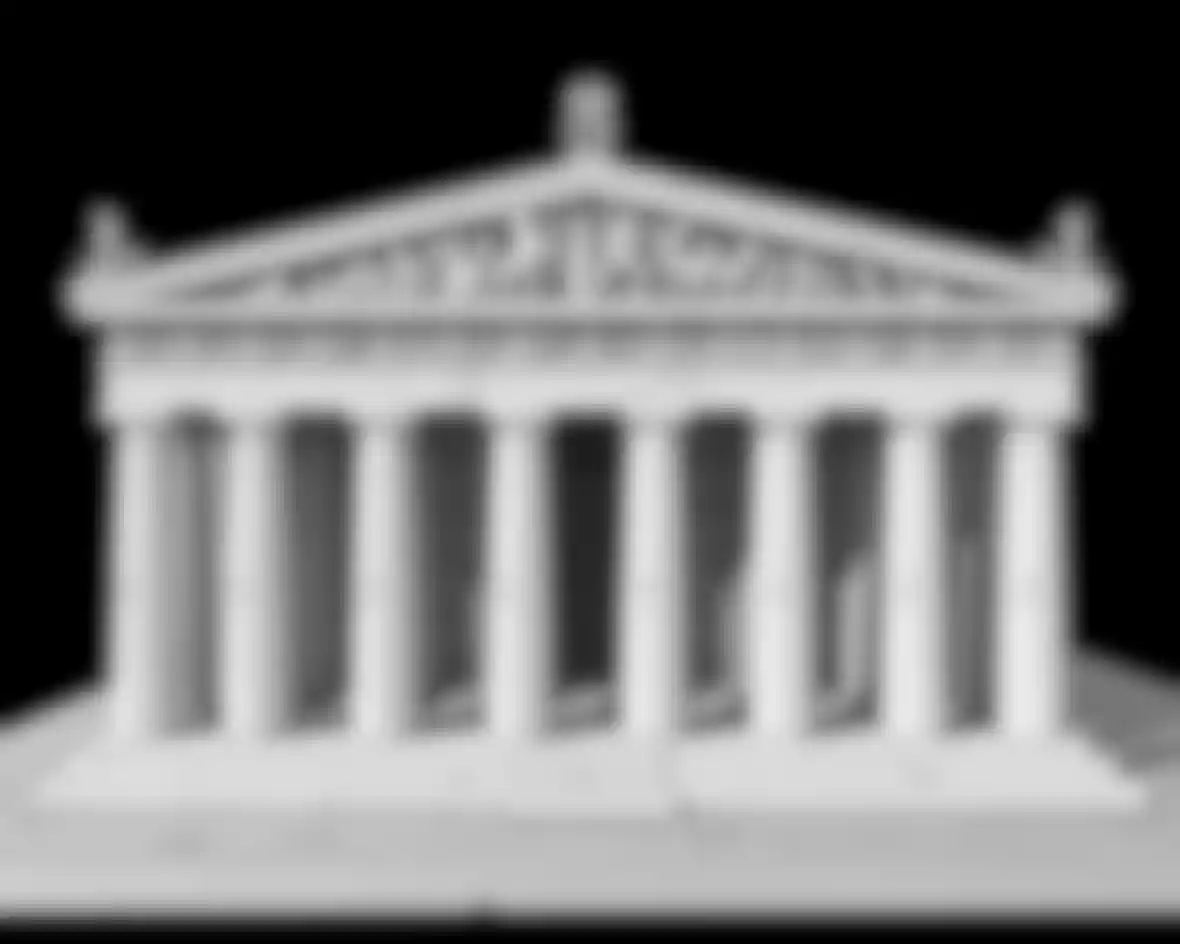
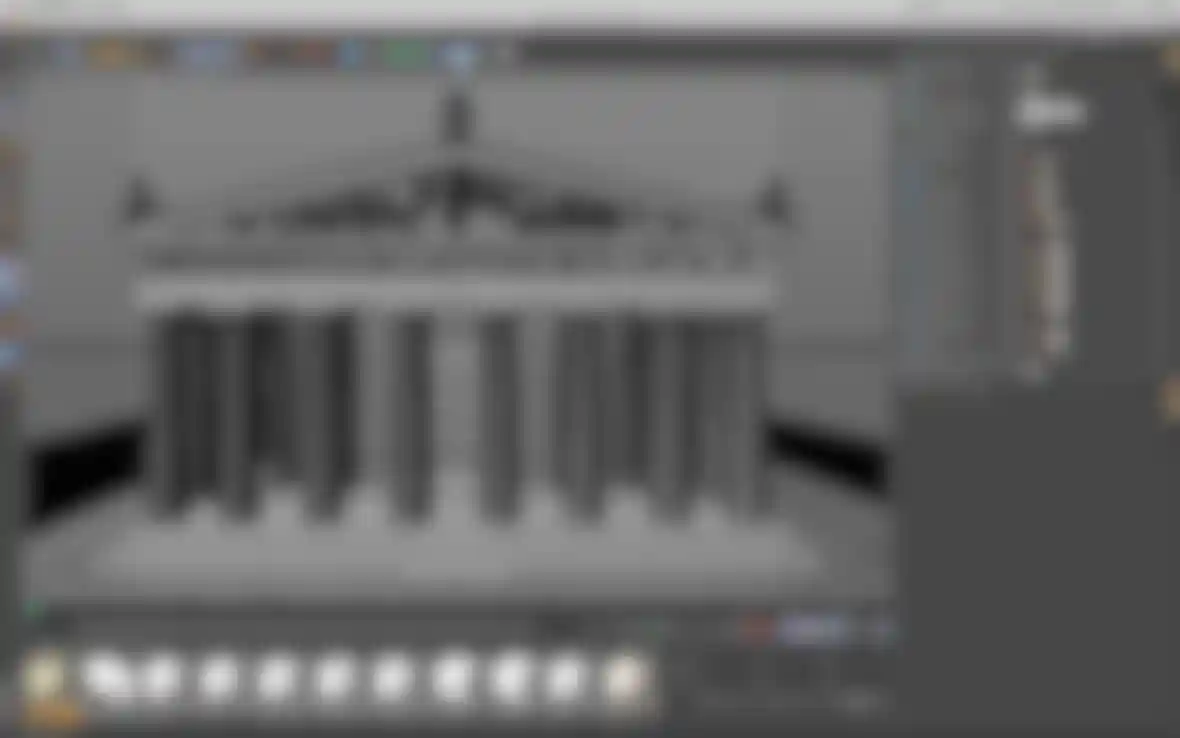
For the 'Nike Is Now' project, Goodinson used Releases 12 through 15 of Cinema 4D. Now using Release 16, Goodinson explains that two of the new tools are particularly useful for recreating such ancient worlds.
"The new polygon tool is impressive. The ability to 'freeform' and paint a line of polygons, add to it, extend it and move in a single tool is certainly appreciated by me when I am sculpting, especially when the subject is 'hair and clothing' - difficult aspects of classical Greek sculpture. As to workflow, this is a real time saver, a veritable 'Swiss Army Knife' of functionality in this new Cinema 4D polygon tool."
"However, the 'game changer' for me is the reflection channel. The ability to create reflections on multiple levels is a major step forward in recreating real world materials. Especially the look of marble."
"For this project especially ('Nike Is Now') Cinema 4D Release 16 now has the ability to show our international team more photo-realistic representations of the multiple marble and limestone building materials used on the Acropolis, most especially Pentelic Marble."
"With new projects on the horizon you can be sure that these two new additions will have a dramatic effect - for the better - in future reconstruction and representations of classical architecture."
Final text edit: John Goodinson & Peter Schultz
The project website:
www.nikeisnow.co.uk